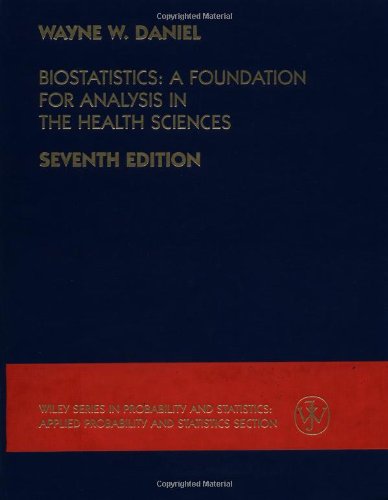4. The purpose of a study by Gehan et al. (A-6) was to define the optimum dose...
Question:
4. The purpose of a study by Gehan et al. (A-6) was to define the optimum dose of lignocaine required to reduce pain on injection of propofol. According to these researchers, propofol is a rapidly acting intravenous agent used for induction of anesthesia.
Despite its many advantages, however, pain induced by its injection limits its use.
Other studies have shown that intravenous lignocaine given before or with propofol reduced the frequency of pain. Subjects used in the study by Gehan et al. (A-6) were 310 patients undergoing anesthesia. Patients were allocated to four categories according to lignocaine dosage. Group A received no lignocaine, while Groups B, C, and D received
.1, .2, and .4 mg kg- I, respectively mixed with propofol. The degree of pain experienced by patients was scored from 0 to 3, with patients experiencing no pain receiving a score of 0. The following table shows the patients cross-classified by dose level group and pain score:
Pain Group Score A B C D Total 0 49 73 58 62 242 1 16 7 7 8 38 2 8 5 6 6 25 3 4 1 0 0 5 Total 77 86 71 76 310 SOURCE: G. Gehan, P. Karoubi, F. Quinet, A. Leroy, C. Rathat, and J. L. Pourriat, "Optimal Dose of Lignocaine for Preventing Pain on Injection of Propofol," British Journal of Anaesthesia, 66 (1991), 324-326.
a. Find the following probabilities and explain their meaning:
1. P(0 n D)
2. P(B U 2)
3. P(3 A)
4. P(C)
b. Explain why each of the following equations is or is not a true statement:
1. P(0 n D) = P(D n 0)
2. P(2 U C) = P(C U 2)
3. P(A) = P(A n 0) + P(A n 1) + P(A n 2) + P(A n 3)
4. P(B U 2) = P(B) + P(2)
5. PO 10) = P(D)
6. P(C n 1) = P(c)P(1)
7. P(A n B) = 0 8. P(2 n D) = P(D)P(21D)
9. P(B n = P(B)P(B10)
Step by Step Answer:

Biostatistics A Foundation For Analysis In The Health Sciences
ISBN: 9780471163862
7th Edition
Authors: Wayne W Daniel






